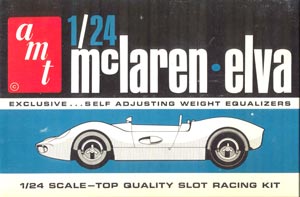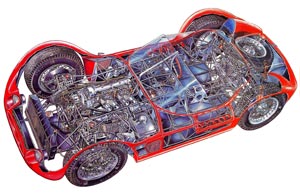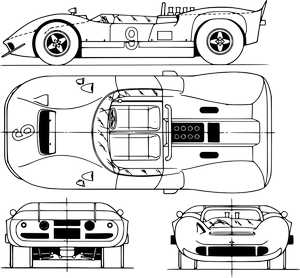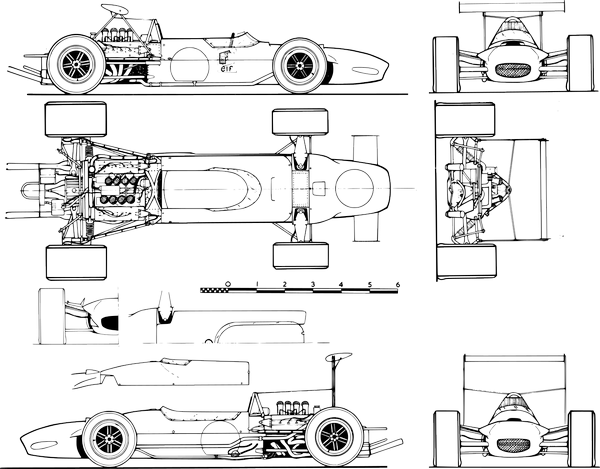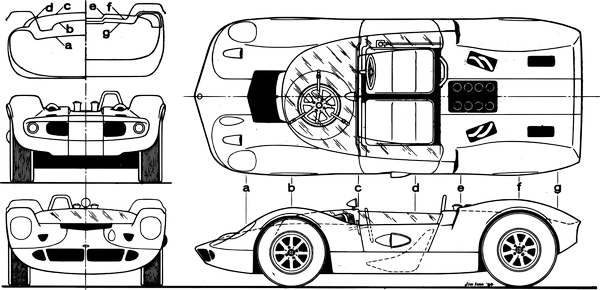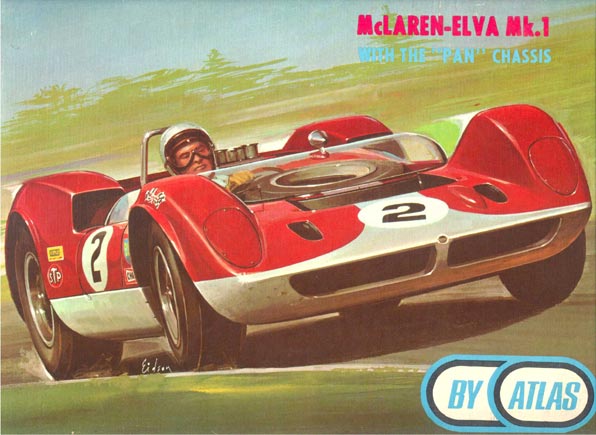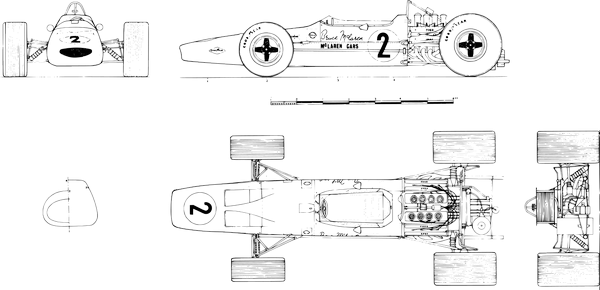Prototype Parade No. 85 | Model Maker February 1959 | Drawn & Described by Walkden Fisher
Maserati 250F
M ASERATI'S announcement of their sudden decision to withdraw from all racing on economic grounds at the close of the 1957 season was received with widespread regret by followers of motor sport. The thoroughbred machines produced by this famous Italian concern have been regarded with affection and respect for years on the world's circuits, and it was therefore fitting that 1957 should provide them with their first World Championship laurels after a long period of ceaseless endeavour.
Juan Fangio, the Scuderia's No. 1 driver, and former five times holder of the World Drivers' Championship, drove the greatest race of his career during the 1957 German Grand Prix at the Nurburgring. His epic battle against the rival Ferraris of Mike Hawthorn and the late Peter Collins will long be remembered by all who were privileged to witness this stirring race. Fangio, in a 250F/ 1957 Maserati, was set the seemingly impossible task of winning back more than a minute in 11 laps (154 miles) from the Ferraris, after an enforced pit stop for fuel and tyres. His mastery of the situation and the car had the watching thousands on tenterhooks as gradually, inexorably, the snarling red Maserati crept ever nearer to the Ferraris lap by lap until, on the penultimate circuit, he swept by into the lead, finally to cross the line 3.6 seconds ahead of Hawthorn's Ferrari

After the firm's withdrawal from racing, the majority of cars were sold to private owners, and the independent organisation of the Scuderia Centro-Sud having purchased some of them, they continued to keep the Maserati flag flying in most of the big international events during 1958.
The well tried six cylinder engine of the Maserati had not been changed fundamentally since its inception in 1954. At the end of the 1956 season it was realised that it was getting past its prime and reaching the limit of its horsepower. Therefore, considerable efforts were made in developing its reliability and tuning it for working on a nitro-methane/alcohol fuel mixture for 1957.
The overall weight of the 250F/ 1957 was reduced and the brakes were improved, thus providing extra acceleration. The Scuderia commenced the season with three new cars as a basis and the 1957 chassis followed the normal Maserati principles of being a tubular space frame. However, the sizes of the tubing were drastically reduced, and vital junctions reinforced with very small tubing forming struts across the corners between main tubes. This new frame proved a great improvement, both structurally and from the point of view of weight.

New riveted alloy fuel and oil tanks were incorporated in the new cars, and the fuel tank has the semblance of a headrest, a holding down strap passing through the front of this rest, under the padded rim. The worm and sector steering box is mounted on the chassis behind the engine; thus insulated from engine vibrations, the steering is lighter and smoother. Similar to the 1956 cars, the five speed gearbox rear axle unit was made standard for 1957, as were the suspensions at front and back. These latter assemblies comprise, at the front, unequal length double wishbones and coil springs with Houdaille vane type shock absorbers and anti roll bar. At the rear, the de Dion tube is positioned in front of the gearbox/axle assembly and located by a central sliding guide and two forward facing radius rods at each end to the chassis frame. Springing is by a transverse roll free leaf spring mounted above the axle assembly —plus Houdaille shock absorbers.
On the brakes, the alloy air deflector plates on the outside of the drums were discarded and slightly larger and wider brakes were built, with stiffer alloy drums and shrunk in liners.
The basic design of the engine remained unchanged. Of 2,494 c.c. capacity, its twin overhead camshafts are gear driven from the front of the crankshaft and operate two inclined valves through adjustable fingers. Each cylinder is equipped with two 14 mm. sparking plugs fired by twin magnetos and the unit develops about 270 b.h.p. at 7,400 r.p.m. Carburation is provided by three horizontal double choke Webers enclosed in an aluminium box and fed with air via a long forward facing side scoop on the radiator cowling.
A characteristic of the 250F/ 1957 Maserati is its long and shapely radiator cowl and profile views of the cars accentuate their excellent design. In fact these splendid machines can truly be regarded as one of the classic racing cars in Grand Prix history, and as such, are an object lesson in straightforward racing car design, ranking with the straight eight Bugatti and 2.9 litre "monoposto" Alfa-Romeo of a past era.
Sixteen inch wire spoke centre lock wheels with alloy rims are fitted front and rear, the front tyres being 5.50 in., and the rear, 7.00 in. Alternatively, as shown on the plan, 17 in. wheels were sometimes fitted at the rear with 7.00 in. tyres.
Wheelbase: 7 ft. 6 in. Track : front 4 ft. 4 in.; Rear : 4 ft. 2 in.


